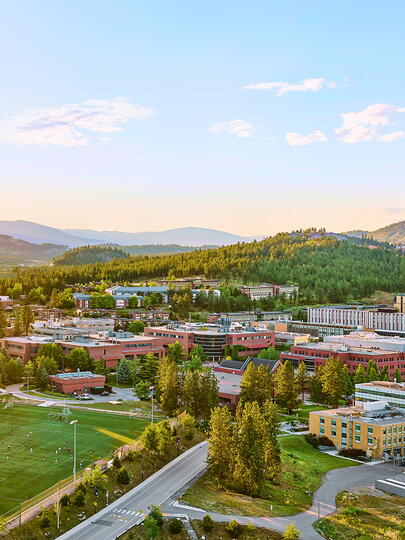
The Big Picture
Elasmosaurus skeleton
“We hope to ignite a sense of amazement and curiosity in visitors as they imagine this majestic sea creature swimming through a Cretaceous sea.”
Kirsten Hodge , Director of the PME
Last September, UBC’s Earth Sciences building gained a 13‑metre‑long occupant when the cast of an Elasmosaurus skeleton was suspended in the glass atrium as a permanent installation of the Pacific Museum of Earth. (The museum already houses a Lambeosaurus skeleton – a duck‑billed, hooded dinosaur – and Canada’s largest blue whale skeleton is installed at UBC’s Beaty Biodiversity Museum.) In case your Elasmosaurus knowledge is spotty, here are a few facts you can casually drop into your next conversation about Late Cretaceous creatures:
- The Elasmosaurus was a plesiosaur (a marine reptile), not a dinosaur.
- They lived in North America during the Late Cretaceous period 80 million years ago, alongside the dinosaurs.
- Elasmosaurs likely inhabited the Western Interior Seaway, a continental sea covering central North America at the time.
- Elasmosaurs have BC roots as well. The first specimen found west of the Canadian Rockies was discovered in 1988 in shale off the Puntledge River, near Courtenay.
- The PME’s replica skeleton measures 13 metres long, with more than half of that length taken up by neck.
- The length and weight of an Elasmosaurus’ neck would place the giant reptile’s centre of gravity far back behind its flippers, limiting its ability to raise its head too far out of the water.
- Only one confirmed complete Elasmosaurus skeleton has been discovered. The Canadian Museum of Nature in Ottawa also features a replica plesiosaur skeleton.































